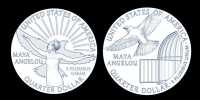The scientific revolution was during a period where our thinking as a human being changed and we started modernizing as a society. The Scientific Revolution is a series of events that marked the rise of modern science in the modern age, when the development of mathematics, physics, astronomy, biology (including human anatomy) and chemistry transformed society’s view of nature. During the scientific revolution, a new view of nature emerged, replacing the Greek view that had dominated science for nearly 2,000 years. Science became an autonomous discipline, separate from both philosophy and technology, and was considered a useful goal. About our universe and how we live on earth changed during the 16th to 18th centuries. The scientific revolution is a label for a period in which scientific discoveries and ways of thinking have changed so that the effects can still be relevant in our society today.
In the 18th century, the concept of scientific revolution emerged during an extended period in the work of Jean Sylvain Bailey, who saw the two-step process of removing the old and establishing a new one. The growing flood of information resulting from the scientific revolution has put a heavy strain on old institutions and practices. It was no longer enough to publish scientific results in an expensive book that few people could buy; The information had to be spread widely and quickly. The scientific revolution took place in Europe at the end of the Renaissance period and continued until the end of the 18th century, influencing the intellectual social movement known as the Enlightenment. After its dates have been disputed, Nicholas Copernicus’s de Revolution marks the beginning of the science revolution published in 1543 by the Erbium Celestial. New ways were created to perform these endings. Scientific societies emerged, beginning in Italy in the early 17th century, and culminating in two great national scientific societies that marked the subtleties of the scientific revolution: the Royal Society of London Involving Natural Knowledge, built by the Royal Charter in 1662, and the Academy of Sciences in Paris. Was formed. In 1624, Galileo Ptolemaic and Copernican were permitted to write and publish details of the system on the condition that they do not do so in favor of the heliocentric model. The result of the “Dialogue on Two Chief World Systems” book was published in 1632 and was interpreted as violating the agreement. The culmination of the scientific revolution was responsible for the “grand synthesis” of Isaac Newton’s 1687 Principia. The work creates laws about motion and universal gravitation that complete a new cosmic synthesis. Towards the end of the eighteenth century, the era of enlightenment that followed the scientific revolution began in the “age of reflection.”
The scientific revolution was a time when many new ideas came from different intellectuals which still hold true today. The scientific revolution influenced the development of the enlightened values of the individual because it demonstrated the power of the human mind. Both Nicholas Copernicus and Francis Bacon provide examples of what the scientific revolution was and how it gave us knowledge that is still used today.















